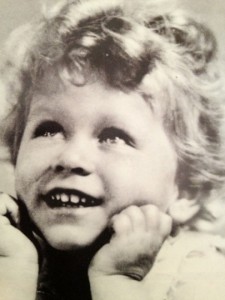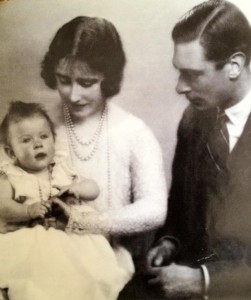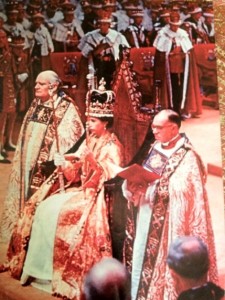Queen Elizabeth II celebrates six decades in the supreme role of British sovereign
 “By the sudden death of my dear father I am called to assume the duties and responsibilities of sovereignty. My heart is too full for me to say more to you today than I shall always work, as my father did throughout his reign, to advance the happiness and prosperity of my peoples, spread as they are all the world over.”
“By the sudden death of my dear father I am called to assume the duties and responsibilities of sovereignty. My heart is too full for me to say more to you today than I shall always work, as my father did throughout his reign, to advance the happiness and prosperity of my peoples, spread as they are all the world over.”
With this statement to the Lords of the Council for the formal Accession ceremony held Feb. 8, 1952, 25-yr-old Elizabeth was proclaimed Queen Elizabeth II, after the February 6 death of her father King George VI, who died from lung cancer. Her coronation was held June 2, 1953.
She has never since reneged on her pledge. Assuming the dutiful and sometimes seemingly stoic role of monarch of Britain, for a time over numerous territories worldwide, and through various fractious and even scandalous family, country and international incidents for 60 years, Queen Elizabeth has become an icon both at home and around the world.
Although February 6 is her official accession anniversary, Britain’s official celebrations to mark her 60 years as head of the British monarchy – her diamond anniversary or jubilee – culminate this June 2-5 weekend.
A series of unfortunate events

But history wasn’t supposed to turn out this way. It was, to borrow from Lemony Snicket, “A series of unfortunate events” that would lead to young Elizabeth being proclaimed queen of England and its empire.
Born April 21, 1926, “Lilibet” as she was affectionately called by her close home circle, grew up with her sister Margaret, sheltered and out of the public eye. Home-schooled and taking music, dance, singing and art classes, Elizabeth and her sister lived what would be considered just like other aristocratic daughters of the time.
There was no reason her life would be any different since her father, then the Duke of York, was King George V’s second son, and it was her uncle David, the first born, who would be crowned King Edward VIII and expected to marry and produce heirs.
After King Edward’s January 1936 accession to the throne, his brief reign was never popular. Before the year was over, the King issued an announcement in December that he would be abdicating the British throne to marry the woman he loved. An American divorcee, Ms Wallis Simpson could not hope to gain acceptance as queen; the king had to choose between love and royal duty.
His decision saw Elizabeth’s father Albert being proclaimed King George VI, and Elizabeth, the eldest child of a family without male heirs, became heir apparent. It is said that the king was secretly anguished at the thought of Elizabeth becoming queen, but insisted she be prepared for the eventuality by being better schooled.
Her father reigned during the Second World War, and just before the war would end in 1945, Elizabeth began training in the Auxiliary Territorial Service, the women’s branch of the British Army during the Second World War, where she did a course in vehicle maintenance and trained as an ambulance driver. She rose to the rank of junior commander, but shortly after finishing her training, the war ended.

Marriage, motherhood and duty
Two years later, on Nov. 20, 1947 Elizabeth married her childhood love – although few knew it – Lieut. Philip Mountbatten, whom she first met when she was just 13. That meeting at Dartmouth’s Royal Naval Academy is said to have left her smitten with the young Prince Philip of Greece who was 18 at the time –but her affection remained her secret.
Prince Philip and Princess Elizabeth would meet again, and, as the prince renounced his Greek title and became a British citizen, marry when the princess was just 21. Elizabeth became a mother at 22 when Charles, the Prince of Wales was born in 1948. Two years later Princess Anne became the second addition to the family. The young parents would not have any more children until 1960 when Prince Andrew was born, and finally in 1964, Prince Edward.
An attentive mother, Elizabeth is said to have revelled in motherhood, but the duty thrust upon her after the February 1952 death of King George VI when she was just 25, meant that as queen, much of the early years of Anne and Charles would be spent with nannies.
Weakened after what is called the strains of the Second World War and the post-war period, which took a toll on the king’s health, the monarch never recovered from a lung infection and died in his sleep, bringing his secret fears to life as his daughter Elizabeth became Queen Elizabeth II.
Royal reign




